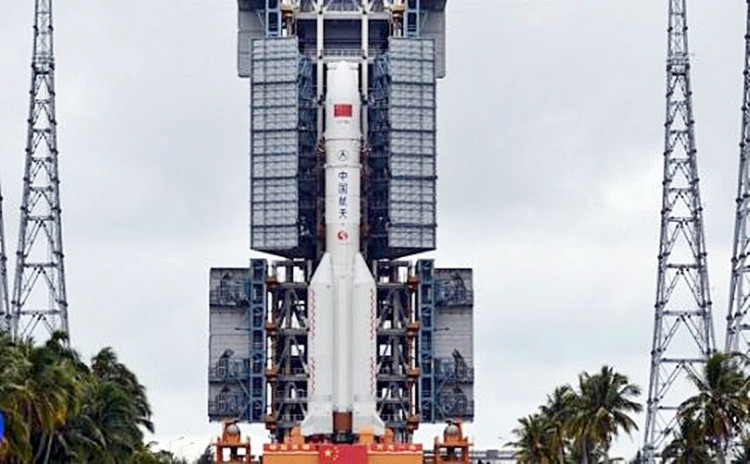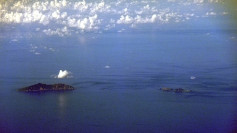China will land the Chang'e-5 robotic probe's lander at Mons Rümker on the near side of the moon, probably Dec. 3, after the two main modules of the spacecraft separated early Monday morning.
The China National Space Administration said the orbiter and sample return capsule module had separated from the lander and ascender module at 4:40 a.m. BJT Monday. Mission control said the lander and ascender are waiting for the perfect time for a soft landing.
The orbiter and return capsule will continue to orbit the moon and. This module will adjust to a designated orbit to dock with the ascender spacecraft.
The administration said the landing was expected in two days. Once it touches down on the lunar surface, the lander will collect two kilograms of lunar soil and rocks that will be taken back to Earth by the sample return capsule.
The lander will drill 2 meters into the lunar surface and extract sub-surface soil. The lower layers of the sample will record information from a billion years ago, while the top layer will more closely reflect present day conditions on the moon.
Once the soil samples are secured, the ascender will fly from the lunar surface to transfer the moon samples to the sample return capsule in lunar orbit. The capsule will return the soil samples back to the Earth.
The sample dig and the ascender's takeoff has to be completed within 48 hours, according to Liu Jiangang, chief of the command team.
The sample-return capsule will head back to Earth carrying with it some 2,000 grams (71 ounces) of lunar soil and other material.
Chang'e-5 will be the world's first lunar sample-return mission since the Soviet Union's Luna 24 in 1976. The U.S. is the only other country to have successfully returned lunar soil and rocks to the Earth.
Chang'e-5 was launched by a Long March-5 Y5 carrier rocket from Wenchang Space Launch Center in China's Hainan Province Nov. 25. The administration said the sample return mission will last around 23 days.
Over the next 10 years, China plans to establish a robotic moon base station to conduct unmanned explorations in the South Polar Region. It will launch the Chang'e-6, 7 and 8 missions through the 2020s before it lands the first China astronaut on the moon.






